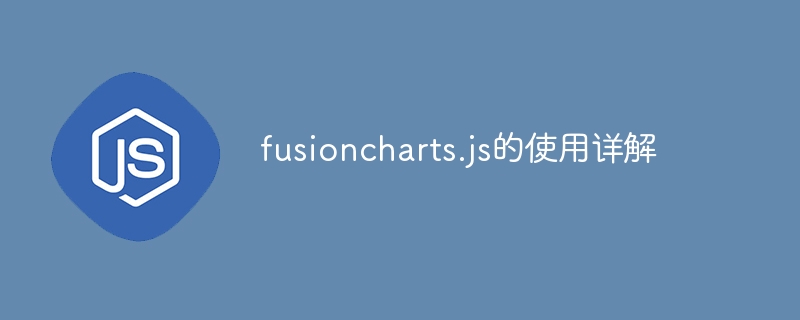
fusioncharts.js provides rich chart types, data visualization and interactive functions to help developers create high-quality charts and instruments in web applications.

FusionCharts.js is an open source charting library based on JavaScript. It provides a wealth of chart types, data visualization and interactive functions to help developers on the Web. Create high-quality charts and gauges within the app. This answer will introduce the usage and sample code of FusionCharts.js in detail.
1. Install FusionCharts.js
First, you need to download the FusionCharts.js file from the official website of FusionCharts and add it to your web application middle. You can save the FusionCharts.js file anywhere in your project folder and include it in pages where you need to use charts.
2. Create a chart container
Before using FusionCharts.js, you need to create an HTML container to host the chart. You can use a div element to create a container and give it a unique ID or class name. For example:
3. Initialize the chart
Next, you need to initialize the chart object in JavaScript and specify some configuration options for it. You can use the FusionCharts function to create a chart object and specify the chart type, data source, and other configuration options for it. For example:
var chart = new FusionCharts({ type: 'bar', renderAt: 'chartContainer', width: '100%', height: '400', dataFormat: 'json', dataSource: { // 数据源配置选项 } });
In the above example, we create a histogram object and render it into an HTML container with the ID chartContainer. We specified the width and height of the chart, and set the data source and other configuration options.
4. Configure the data source
In FusionCharts.js, you can use a JSON format data source to provide chart data. In the above example, we specified the configuration options of the data source through the dataSource option. Here is a sample data source configuration option:
{ "chart": { "caption": "Sales", "xAxisName": "Quarter", "yAxisName": "Sales", "numberPrefix": "$" }, "data": [ { "label": "Q1", "value": 41500 }, { "label": "Q2", "value": 55700 }, { "label": "Q3", "value": 61500 }, { "label": "Q4", "value": 54700 } ] }
In the above example, we defined a data source with four data points. We specify a title for the chart, names for the X and Y axes, and a prefix for the numerical values. Then, we defined four data points, each with a label and value. You can modify these configuration options according to your needs.
5. Render the chart
Once you have configured the data source and other options, you can use the render method to render the chart. For example:
chart.render();
In the above example, we called the render method to render the chart object. This will trigger a series of rendering operations that will ultimately render the chart in the specified container.
The above is the detailed content of Detailed explanation of the use of fusioncharts.js. For more information, please follow other related articles on the PHP Chinese website!
 How to use fusioncharts.js
How to use fusioncharts.js html set font color size
html set font color size Formal digital currency trading platform
Formal digital currency trading platform The difference between computer hibernation and sleep
The difference between computer hibernation and sleep xrp Ripple Latest News
xrp Ripple Latest News Common color hexadecimal codes
Common color hexadecimal codes What is the difference between TCP protocol and UDP protocol?
What is the difference between TCP protocol and UDP protocol? How to clean the C drive when it turns red
How to clean the C drive when it turns red



